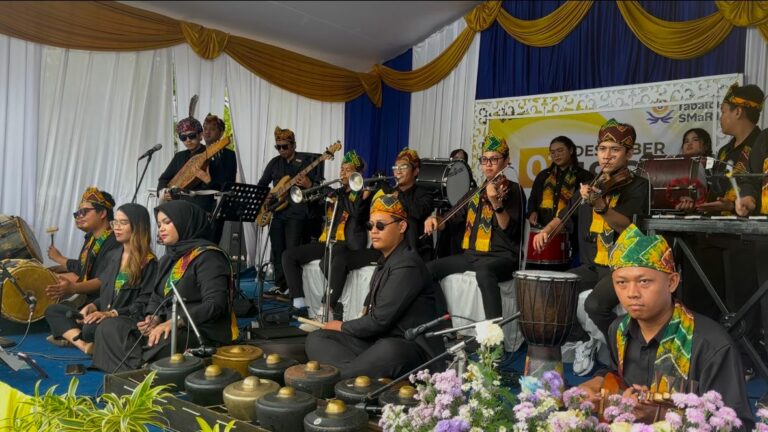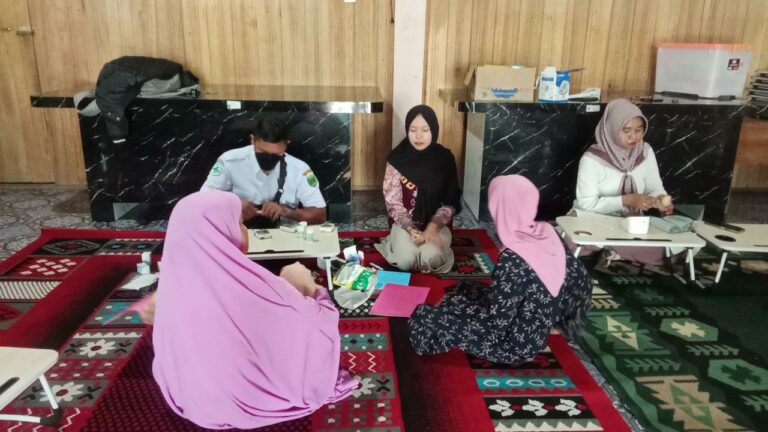Sketsa Batik Kalimantan Timur: Exploring the Beauty of Eastern Borneo’s Batik Art
Batik is a traditional form of textile art that has been practiced for centuries in many parts of Indonesia. Each region of the country has its unique style and motifs, but all share a common technique of applying wax to fabric before dyeing it. One of the lesser-known forms of batik is the Sketsa Batik from East Kalimantan, known for its intricate designs and rich cultural heritage.
In this article, we’ll explore what makes Sketsa Batik Kalimantan Timur unique and why it’s an essential part of the region’s identity. We’ll delve into the techniques used to create this beautiful art, the motifs and symbolism behind the designs, and where you can find Sketsa Batik in East Kalimantan and beyond.
What is Sketsa Batik Kalimantan Timur?
Sketsa Batik Kalimantan Timur is a form of batik art that originated in the eastern part of Borneo Island, specifically in the Indonesian province of East Kalimantan. Sketsa Batik is a combination of hand-drawn sketches and batik techniques that result in intricate and detailed designs. This form of batik often features nature-inspired motifs, such as plants, animals, and landscapes, as well as cultural symbols and patterns that are unique to the region.
The process of creating Sketsa Batik typically involves several stages, including sketching the design by hand, applying wax to the fabric using a tjanting or canting (a tool for applying wax), dyeing the fabric, and finally removing the wax to reveal the finished design. The result is a striking and vibrant textile that is both beautiful and meaningful.
What makes Sketsa Batik Kalimantan Timur unique?
The Sketsa Batik Kalimantan Timur is unique in several ways. Firstly, it incorporates hand-drawn sketches, which allow for a great deal of individual creativity and flexibility in design. This means that each piece of Sketsa Batik is unique and one-of-a-kind. Secondly, Sketsa Batik often features intricate and detailed designs that are unlike any other form of batik. The use of multiple colors and layers creates a stunning and complex appearance that draws the eye in and captivates the viewer. Finally, Sketsa Batik often incorporates cultural symbols and motifs that are specific to the region. This makes Sketsa Batik an essential part of the cultural heritage of East Kalimantan and an important symbol of its identity.
What are the techniques used in Sketsa Batik Kalimantan Timur?
The Sketsa Batik Kalimantan Timur involves several different techniques in its creation. The first step is sketching the design by hand, using a pencil or charcoal to create the outline of the design. Once the design is complete, the artist applies wax to the fabric using a tjanting or canting. The wax is applied in specific areas to create areas of resistance to dye. After the wax has been applied, the fabric is dyed in a specific color. This process is repeated for each color until the design is complete. Finally, the wax is removed by boiling the fabric in water or by heating it with an iron, revealing the finished design.
What are the motifs and symbolism behind the designs in Sketsa Batik Kalimantan Timur?
Sketsa Batik Kalimantan Timur features a variety of motifs, each with its own meaning and symbolism. Some of the most common motifs include plants and animals found in the local environment, such as birds, butterflies, and flowers. The use of these motifs reflects the importance of nature in the daily lives of people living in East Kalimantan. Other motifs include cultural symbols, such as the Dayak Kenyah Mask and Dayak Kenyah Shield, which represent the cultural heritage of the region. These symbols have deep meaning and are often used in rituals and ceremonies.
Where can you find Sketsa Batik Kalimantan Timur?
Sketsa Batik Kalimantan Timur can be found in various places throughout East Kalimantan, such as local markets, batik shops, and galleries. One of the most famous places to find Sketsa Batik is at the Pasar Seni Batik Nusantara Samarinda (Samarinda Batik Art Market). This market features a wide range of batik art, including Sketsa Batik, from various parts of Indonesia. Visitors can see the process of creating Sketsa Batik and purchase finished pieces to take home as souvenirs. Sketsa Batik can also be found online, through websites and social media pages that showcase the work of local artists.
FAQs
Q: Is Sketsa Batik Kalimantan Timur only for clothing?
A: No, Sketsa Batik Kalimantan Timur can be used for a variety of textile products, such as tablecloths, bags, and accessories.
Q: How long does it take to create a Sketsa Batik piece?
A: It depends on the complexity of the design and the number of colors used. Some pieces may take several days to complete, while others can be finished in a few hours.
Q: Is Sketsa Batik only available in East Kalimantan?
A: While Sketsa Batik originated in East Kalimantan, it can now be found in other parts of Indonesia as well, often at local markets and batik shops.
Q: Is Sketsa Batik Kalimantan Timur a traditional art form?
A: Yes, Sketsa Batik Kalimantan Timur has been practiced for centuries in East Kalimantan and is an essential part of the region’s cultural heritage.
Q: Are there any special care instructions for Sketsa Batik pieces?
A: Sketsa Batik pieces should be washed in cold water and air-dried to prevent the colors from fading. Ironing should be done on a low heat setting and without steam, and avoid exposure to direct sunlight for prolonged periods.
Conclusion
Sketsa Batik Kalimantan Timur is a unique and beautiful form of batik art that reflects the cultural heritage and natural beauty of East Kalimantan. Its intricate designs and symbolic motifs make it an essential part of the region’s identity, and it has become a popular souvenir for visitors to the area. The Sketsa Batik Kalimantan Timur is an excellent example of the traditional art form that continues to thrive and capture the hearts of all who appreciate beautiful and meaningful textiles.



